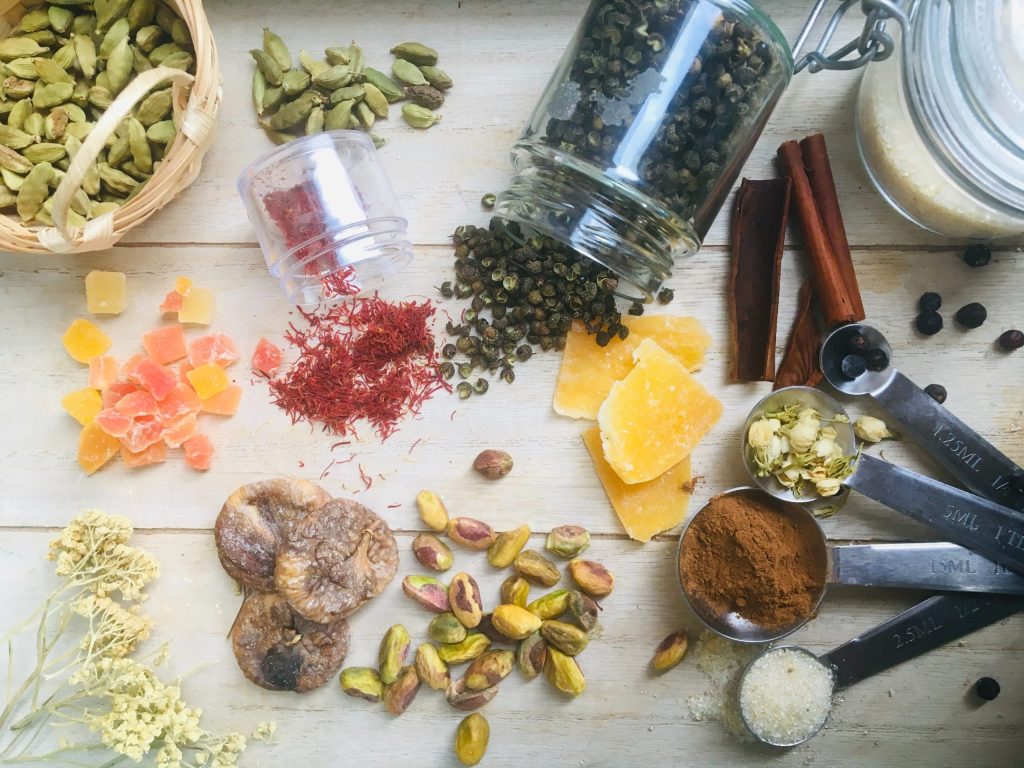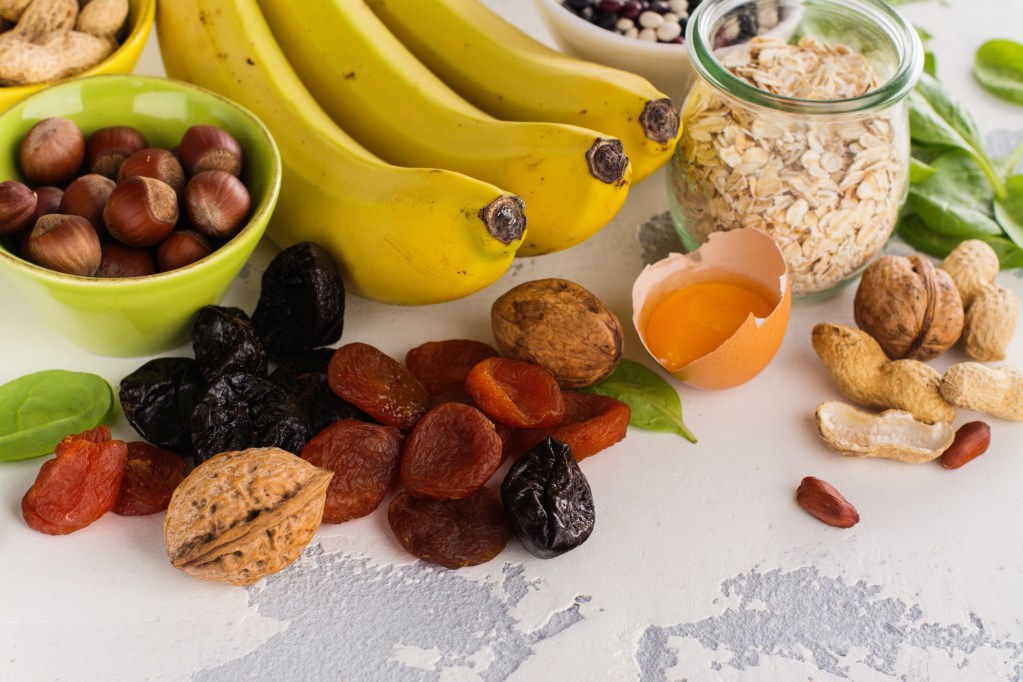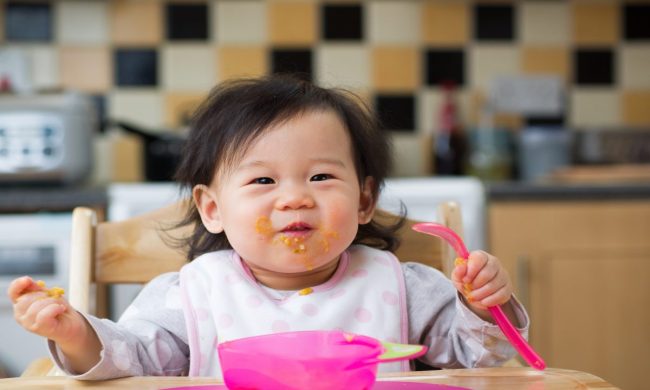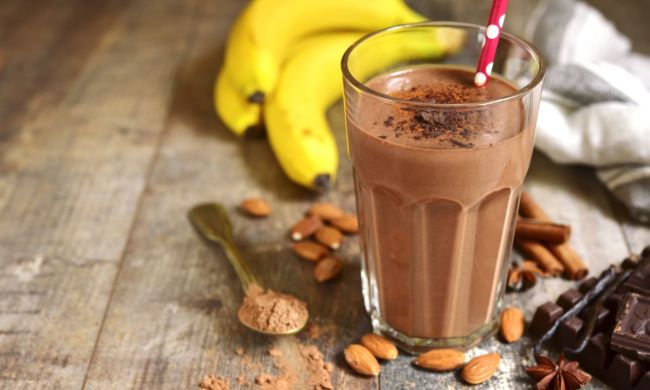Gradually introducing your child to new foods, including your own homemade baby food combos, can be an enjoyable and exciting experience for all involved. But sometimes, you have to get creative to get your kiddo to eat their fruits and veggies. Serving healthy foods prepared in various ways may make this task easier for you and may make your little one more excited to indulge. Dried fruit is one example of an alternative preparation method that may appeal to your child, but when exactly can your young child eat dried fruit safely?
Dried fruit in the first year

Babies can be fed pureed or thoroughly mashed fruits and vegetables from the time they start eating solid food. Professionals in early childhood development agree that the ideal time to start introducing finger foods is somewhere between 7 to 9 months of age.
Once a child has the ability to eat finger food, they can then be fed small pieces of dried fruit or vegetables. You can tell your child is ready for finger food when they start grabbing at spoons. The American Academy of Pediatrics recommends that you cut large dried food into pieces no larger than a raisin, and, as with any food, your child should not eat dried fruits while unsupervised. Always keep an eye on your baby while they are eating and stay close by in case they start to choke. Also, don’t let toddlers and younger children eat in the car to help prevent choking.
Health benefits of dried fruits

Most dried fruits are good sources of multiple nutrients, such as fiber, vitamins, minerals, enzymes, and other bioactive compounds. This makes dried fruit healthy in general, but of course, the exact nutrition associated with any one dried food is dependent on what kind of food it is.
Dried fruits are often nutrient-dense and serve as a suitable source of nutrition without too many calories. The micronutrients acquired when dried fruit is eaten contribute to proper growth and development, especially in the first few years of life. Most dried fruits are rich in fiber, which promotes satisfactory digestive health. Prunes are an especially good source of fiber, and prune juice is sometimes recommended to treat constipation in babies.
Some varieties of fruit promote the maintenance of the gut microbiome by introducing chemicals that bacteria need to eat. Another property of fruit relevant to bacteria is that most have anti-inflammatory and antioxidative compounds that work throughout the body. When consumed regularly, fruits help to boost your immune system, as well as that of a baby.
Babies are also prone to anemia, particularly between the ages of 9 months and 24 months. Supplementing a baby’s diet with dried fruits, like raisins or apricots, helps to provide a sufficient amount of iron. Finally, some dried fruits have been shown to have a protective effect on bone formation.
Drawbacks of dried fruit

Although dried fruit has a good deal of benefits associated with its consumption, there are also a number of risks associated with feeding dry fruit to a baby. Like any solid food, dried fruit for babies or toddlers can pose a choking hazard. Make sure foods are diced into small portions prior to giving them to a baby.
By itself, the high sugar content of many dried fruits can contribute to a few health issues. Candied fruits are the worst culprit when it comes to types of dried fruits laden with sugar. Excessive sugar consumption has been linked to obesity.
Babies may get used to the sweet taste of dried fruit and may not want to eat other preparations of fruit, and the small quantities and size can cause your toddler to eat more dried fruit than you intend. The chewy texture of dried fruits often causes pieces to get stuck in the mouth which can lead to dental issues. Exposing teeth to sugar for long periods of time is what causes the destruction of tooth enamel and the formation of cavities.
What are the different ways to integrate dried fruit?

If your child is not ready to eat chunks of dried fruit on their own, you’re in luck! There are many ways to serve them up safely. The primary factor to keep in mind with children who are between 7 to 18 months of age is that dried fruits are hard on the digestive system. They can often be coated in a sugary type of layer, which provides the potential for cavities or perhaps a choking hazard.
You can mince raisins into very small pieces and incorporate them into muffins, smoothies, or oatmeal. As your child gains confidence with finger foods and learns to chew thoroughly, it may be wise to soak dried fruit in water or milk to better soften the chunks. Hot water will soften raisins like magic. Always cut dried fruit into bite-sized pieces when giving dried fruit to your toddler. Soak raisins in hot water until they are soft. It is a great trick!
Here is a great recipe to try:
Simple Honey Raisin Smoothie
- 1/3 cup of ice
- 1/4 cup of vanilla greek yogurt
- 1/2 cup of almond milk
- 3 tablespoons of honey
- 1 teaspoon of cinnamon
- 1/4 cup of raisins
Add all ingredients into a blender and blend until smooth. You may adjust proportions to your taste and preference.
Limit the number of times your child eats candied fruit each week to one or two. Although a good source of fiber, eating too many dried fruits can also cause gastrointestinal issues like bloating or cramps. Since most dried fruit is preserved using sulfites, allergic reactions to dried fruit may occur in some children, so buying organic dried fruits ensures that your child’s meal is sulfite free. Be sure to properly store any dried fruit and throw away expired pieces. This can help keep dried fruit fresh and safe to eat.
Dried fruit for toddlers can be quite a delicious treat that your child can enjoy from a young age. Dried fruits have myriad benefits besides just their great taste. Encourage your toddler to eat dried fruits by introducing them to their diet when appropriate.


